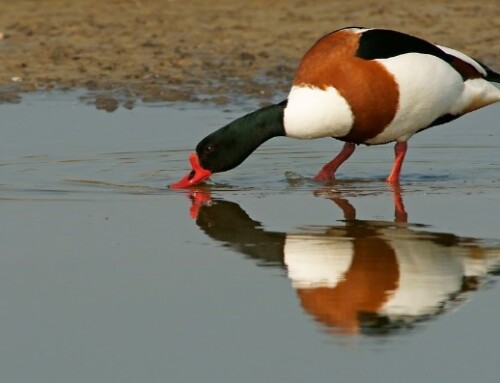Bird contamination or data source? A matter of perspective
LINKED PAPER
The role of radar wind profilers in ornithology. Weisshaupt, N., Arizaga, J. & Maruri, M. 2017. IBIS. DOI: 10.1111/ibi.12562. VIEW
In the past 70 years different types of radars have been used in ornithological research worldwide and enhanced our understanding of bird migration. For example, the biological potential of operational horizontal weather radars has been explored since the 1970s in the US and later in Europe. In contrast, vertically pointing operational atmospheric radars, such as Radar Wind Profilers (RWP, Fig. 1), play only a marginal role in biology, if any. However, they have been long known to detect biological targets (Wilczak et al. 1995). So, could they serve as a potential research tool for the ornithologists’ community?

The related article provides an overview of the evolution and establishment of operational RWPs as well as of their mode of operation. The aim is to depict this radar’s role in meteorology and to evaluate its potential in ornithology. The assessment is based on available literature on RWPs and radar ornithology outlining the past, present and potential future role of wind profilers in avian research.
As the name implies, RWPs provide wind profiles up to several kilometres high by vertical and/or near-vertical radar measurements. The collected raw data from each beam direction is filtered in a signal processing chain to eventually depict the wind profiles in three-dimensional Time-height plots (Fig. 2). RWPs used for different purposes are organised in networks across the globe, e.g. E-Profile in Europe. Currently there are more than 250 RWPs in use, often strategically well situated along migration routes (Fig. 3). These networks serve to coordinate and improve the quality and usability of meteorological information. They also provide support and expertise to both profiler operators and users to render the use of this resource more efficient.


In the past, birds depicted in RWP products, in particular the vast quantity of nocturnal passerines, were considered contamination. Filtering techniques have been developed to eliminate them as far as possible from the meteorological data, though with limited success.
Only recently have the echo signatures of biological targets been scrutinized thoroughly in raw data and used successfully in ornithology. Weisshaupt et al. (2017) developed a respective approach to calculate migration intensities and flight altitudes based on bird-only data. Bird presence was verified by using thermal imaging for simultaneous data collection. Birds could be unambiguously separated from atmospheric targets. the identification is thus independent of weather interference such as high humidity or precipitation, when other radars of shorter wavelengths fail or provide poor bird data quality.
So, why has this radar not been used earlier in ornithology? In operational radar systems a great amount of data accrues typically over time, so called big data. Only recently computer technology and data storage has improved to the extent that such quantities, in particular raw data, can be managed more efficiently. In addition, technical expertise is required to interpret and handle the data. Even in meteorology only a minority of people is familiar with such raw data analyses. Recent interdisciplinary efforts between meteorology and biology have certainly contributed to improve knowledge transfer. However, there is still a long way to go to exploit the available data treasure.
Overall the available literature sketches a promising picture for the potential future utility of this radar type. It could be employed as a complement to other remote-sensing instruments and other sampling techniques used in avian research. Weather independence of ornithological information was found to be a particular benefit. more detailed studies should be encouraged to extend and potentially apply the bird-specific method to the entire range of RWPs.
References and further reading
Aranzadi, Society of Sciences. 2014. Radares para medir el efecto del Mar Cantábrico en la migración de aves. Video. Available from: https://www.aranzadi.eus/video/radares-para-medir-el-efecto-del-mar-cantabrico-en-la-migracion-de-aves. VIEW
Weisshaupt, N. 2016. Infrared uncovers secrets of migration. The BOU Blog, December 19, 2016. Available from: https://bou.org.uk/weisshaupt-infrared-migration/. VIEW
Weisshaupt, N., Lehmann, V., Arizaga, J. & Maruri, M. 2017. Radar wind profilers and avian migration – a qualitative and quantitative assessment verified by thermal imaging and moon watching. Methods in Ecology and Evolution 8: 1133–1145. VIEW
Image credit
Featured image: Bird signals in radar wind profiler spectrograms © Nadja Weisshaupt
If you want to write about your research in #theBOUblog, then please see here.





